Rottweilers, often recognized by their robust physique and soulful eyes, are a breed of inherent strength, agility, and endurance. Originating from Germany, this breed has been used for a multitude of tasks, including guarding, herding, and companionship. Today, Rottweilers stand among the most admired breeds for their loyalty, intelligence, and protective instincts. However, such a commanding presence demands a diet that not only fuels its large body but also caters to its unique nutritional needs. This guide breaks down the dietary essentials for Rottweilers, helping you ensure your canine companion thrives.
1. Understanding Caloric Needs
Due to their size and active nature, Rottweilers require a diet rich in calories and nutrients. But how many calories does a Rottweiler really need?
a. Puppies: Rottweiler puppies are voracious eaters, growing rapidly in their first year. They typically need between 80 to 100 calories per pound of body weight daily.
b. Active Adults: Adult Rottweilers involved in regular physical activity or tasks often require 40 to 50 calories per pound of body weight every day.
c. Less Active or Senior Dogs: As they age or lead a more sedentary lifestyle, their caloric needs decrease to around 30 to 35 calories per pound of body weight daily.
2. Deciphering Dog Food Labels
An informed Rottweiler owner always examines dog food labels critically. Brands do provide feeding recommendations, but these are general guidelines. Adjustments based on your dog’s unique needs, activity levels, and specific weight are crucial.
3. Factors Influencing Dietary Quantities
a. Activity Levels: A Rottweiler employed in tasks like guarding or herding will burn more calories than a housebound dog.
b. Health Status: Conditions like obesity, allergies, or illnesses will directly influence dietary needs and portion sizes.
c. Age and Life Stages: Nutritionally rich diets support growing puppies, while adults might require a maintenance-focused diet. Seniors often need diets formulated for joint health and digestion.
4. Treats and Extras
Though Rottweilers have a love for treats, it’s essential to moderate. Treats should not make up more than 10% of their daily caloric intake. Choose nutrient-rich treats over empty-calorie options.
5. Monthly Cost Estimation
Using a quality commercial dog food priced around $2.75 per pound (considering the larger breed formulation) and about 350 calories per cup:
For an adult Rottweiler weighing 95 pounds and requiring about 3,800 calories daily:
- Daily food requirement = 3,800 calories ÷ 350 calories/cup = 10.9 cups daily.
- Monthly food requirement = 10.9 cups x 30 = 327 cups.
- Given a 40-pound bag offers roughly 160 cups of food, a Rottweiler would need slightly over two bags per month.
- Monthly cost = 2.05 bags x $110 (assuming $2.75 per pound) = approximately $225.50.
This is a general estimate, and actual costs might fluctuate based on brand choice, regional pricing, and individual Rottweiler needs.
6. Special Considerations
Rottweilers have powerful jaws, and while they can handle larger kibble sizes, ensuring it’s of a shape and size that promotes proper chewing is vital. Chewing aids in digestion and dental health. Also, given their rapid growth as puppies, considering formulations that support joint health can be beneficial to prevent future skeletal issues.
Our 5 Top Foods for Rottweilers
The diets were selected by our founder Justin Palmer, a certified canine nutrition expert, specifically with Rottweilers in mind:
| Food | Pros | Cons |
|---|---|---|
|
|
|
|
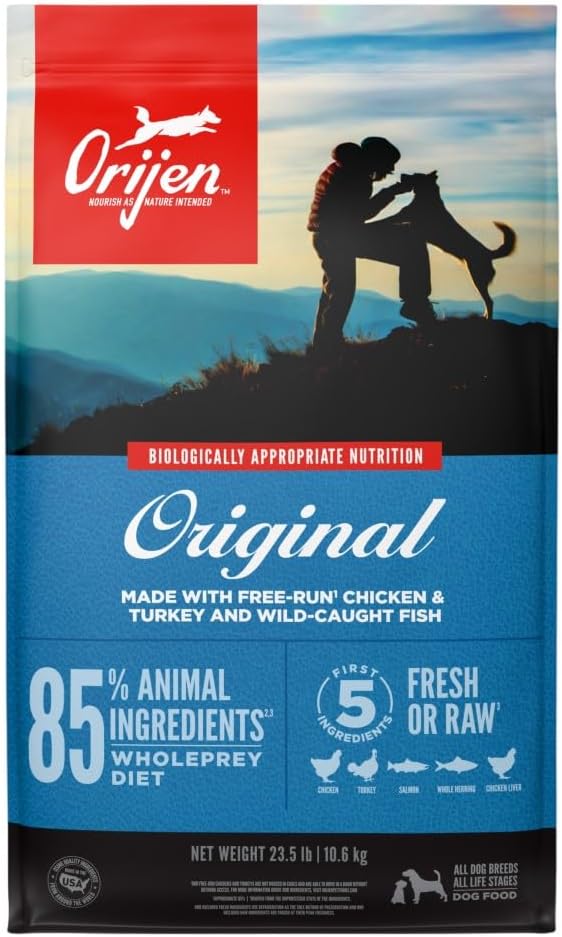
Check Today's Price on: |
|
|
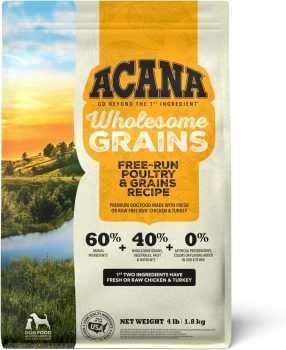
Check Today's Price on: |
|
|
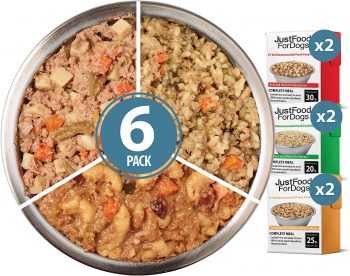
Check Today's Price on: |
|
|
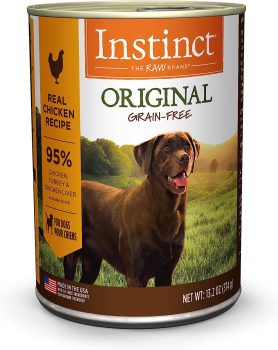
Check Today's Price on: |
|
|
Conclusion
Feeding a Rottweiler goes beyond just satisfying hunger; it’s about nourishing a legacy of strength, loyalty, and intelligence. With their deep-set loyalty, they give us their best, and it’s only fitting we reciprocate with a diet that ensures their health and happiness. Regular check-ups with a veterinarian and a keen eye on their diet will ensure your Rottweiler companion leads a full, active, and healthy life.
Frequently Asked Questions About Feeding a Rottweiler
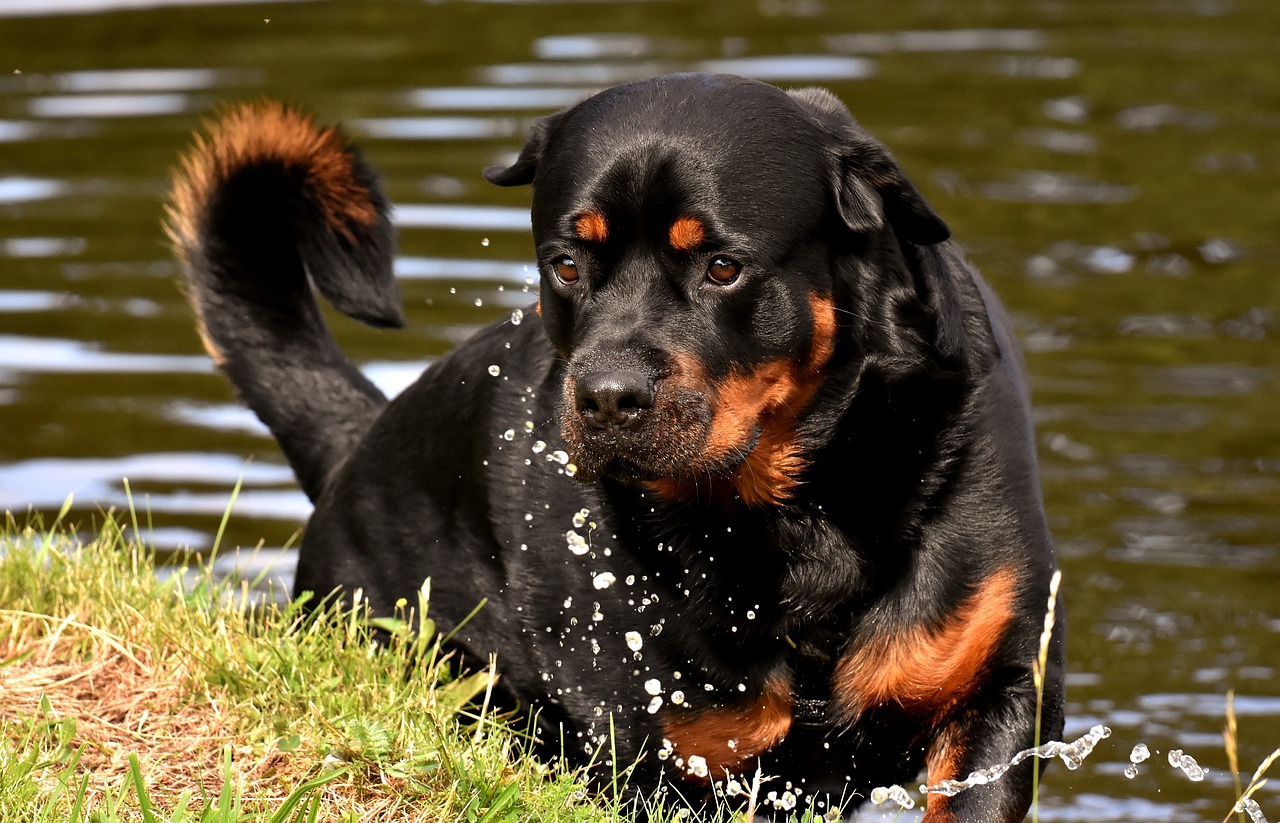
1. How often should I feed my Rottweiler puppy?
Rottweiler puppies require frequent meals to support their rapid growth. It’s recommended to feed them three to four times a day until they reach six months of age. After that, you can reduce it to two meals a day, which is the typical frequency for adult Rottweilers.
2. Are there specific ingredients to look for in Rottweiler dog food?
Yes, Rottweilers benefit from foods high in protein from quality animal sources, along with complex carbohydrates, healthy fats, and essential vitamins and minerals. Ingredients such as real meat, fish, sweet potatoes, and brown rice are beneficial, while fillers and artificial additives should be avoided.
3. Can Rottweilers eat raw food or a BARF diet?
Some Rottweiler owners choose the Biologically Appropriate Raw Food (BARF) diet for their dogs. While this can be nutritionally beneficial, it’s essential to ensure a balanced diet and be aware of potential pathogens in raw meat. Consultation with a veterinarian is advised before starting a raw diet.
4. Should I be concerned about bloat in Rottweilers?
Yes, Rottweilers, like other large breeds, are at risk for gastric torsion or bloat. To prevent this, avoid feeding them large meals or letting them engage in vigorous activity immediately after eating. Elevated food bowls and specialized dog food can also help reduce the risk.
5. How much water should my Rottweiler drink daily?
A Rottweiler should have constant access to fresh water. Typically, a dog requires about 0.5 to 1 ounce of water per pound of body weight daily. For a large breed like Rottweilers, ensuring adequate hydration is crucial for digestion and overall health.
6. My Rottweiler is gaining excessive weight; what can I do?
If your Rottweiler is becoming overweight, consider revisiting their diet and exercise routine. Reduce caloric intake, provide portion-controlled meals, and increase their physical activity. Always consult with a veterinarian to determine the right dietary adjustments.
7. Are there any human foods that are harmful to Rottweilers?
Yes, certain human foods like chocolate, grapes, raisins, onions, garlic, and foods sweetened with xylitol are toxic to Rottweilers, as they are to most dogs. Always be cautious about sharing your food and ensure it’s dog-safe before offering.
8. Do Rottweilers have specific dietary requirements during different life stages?
Absolutely. Rottweiler puppies need food that supports their rapid growth, with higher protein and calorie content. Adult Rottweilers require maintenance-focused diets, while seniors might benefit from diets formulated for joint health, digestion, and decreased caloric content.
9. What types of treats are suitable for Rottweilers?
Opt for nutrient-dense, low-calorie treats for your Rottweiler. Since they’re prone to obesity, treats like carrots, blueberries, or specially formulated dog treats are preferable. Remember to account for treats in their daily caloric intake.
10. Are grain-free diets good for Rottweilers?
Grain-free diets can be suitable for some Rottweilers, especially if they have grain allergies. However, recent studies suggest a potential link between certain grain-free foods and heart issues in dogs. Always consult with a veterinarian before making significant changes to your dog’s diet.
 Check Today's Price on:
Check Today's Price on: Toledo, United States.
Toledo, United States.